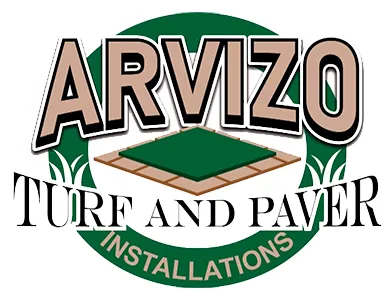Frequently Asked Questions
Turf installers, or those masterful professionals adept at transforming a barren landscape into a verdant expanse, work on a timeline that's influenced by several key elements; size of the area, terrain, and weather conditions being some of the most prominent. For relatively small, flat areas, the installation process could be completed within a day or two. Larger, more complex projects or those that involve undulating terrains may require up to a week or more.
It's important to note that good turf installers prioritize precision over haste; they meticulously prepare the ground, expertly lay the turf, and thoughtfully clean up after the process. This careful attention ensures a beautiful, long-lasting result. Therefore, while comparing options, consider not just the duration but the quality of service provided by different turf installers. The goal is to find an installer who strikes the perfect balance between efficiency and excellence.
Selecting a turf installer can be a journey riddled with challenges; however, a few key considerations can guide you towards the right choice.
Firstly, experience matters; a seasoned installer would have tackled diverse tasks, honed their skills, and refined their techniques. Look for a turf installer with a robust portfolio, showcasing a variety of successful projects.
Secondly, consider their reputation; online reviews, ratings, and testimonials can shed light on their reliability, professionalism, and quality of work.
The second paragraph of your search should focus on the finer details. Take note of their installation process; a quality installer uses advanced techniques, ensures proper soil preparation, and pays attention to drainage details.
Another consideration is the quality of turf they use; superior grade, durable, and low-maintenance turf will save you money and hassle in the long run.
Last, but certainly not least; consider their pricing structure. While cost shouldn't be the sole deciding factor, ensure the services offered provide good value for your investment. Remember, like all things in life, you often get what you pay for in the realm of turf installation.
The cost of hiring a turf installer can greatly vary; it's dictated by a multitude of factors such as the size of the area, the type of turf selected, and the complexity of the installation.
On average, homeowners typically spend between $5 and $20 per square foot for professional turf installation. However, in the grand scheme of things, this cost can fluctuate; for large or complex installations, prices may exceed this average.
It's essential to remember that choosing a turf installer isn't solely about price; quality, experience, and reputation play a crucial role as well.
Some turf installers might offer seemingly unbeatable prices, yet their workmanship and material quality may be subpar. Therefore, when comparing between options related to turf installers, one should consider reviews, ratings, and previous customer experiences to make an informed decision.
Remember, investing in a quality turf installer can save you from costly repairs and maintenance in the long run.
Maintaining your artificial turf post-installation is an essential element; it's a nuanced dance that ensures longevity and aesthetic appeal.
The first step, quite unexpectedly, is a simple one - keeping it clean. Brush off any detritus; leaves, twigs, and suchlike. A gentle broom or leaf blower can accomplish this task efficiently.
Secondly, routine rinsing is crucial; it helps keep your turf fresh and free from dust and pollen.
If you're a pet owner, it's imperative to clean up after your furry friends promptly; enzyme cleaners are particularly handy for this task. They help neutralize odors and prevent bacterial growth.
The somewhat unlikely step of grooming your turf is also beneficial. You'd want to lightly brush your turf with a synthetic bristle broom to prevent matting and ensure fibers stand erect for a natural look.
When comparing between different turf installers, consider those that offer detailed maintenance guides or post-installation services, as these add significant value to your investment.
Remember, the key to a vibrant, long-lasting artificial turf lies in consistent, gentle maintenance.
Turf installers; those skilled landscapers who transform barren plots into lush green spaces, usually have the capacity to install turf on a wide variety of soil types. However, soil conditions can significantly impact the success and longevity of your turf installation.
For example, sandy soils are often great for turf because they drain well and warm up quickly in spring, while clay soils retain water and nutrients but can be prone to waterlogging.
Before installing turf, it's crucial that your chosen turf installer conducts a thorough soil assessment to determine its type and suitability. They should then prepare the soil appropriately, which may include adjusting the pH level, improving drainage, and adding the necessary nutrients.
Thus, while turf may technically be installed on any type of soil, the preparatory work done by experienced turf installers can make a world of difference in ensuring your turf thrives for years to come. So when comparing options, look for turf installation services that offer comprehensive soil assessments and preparation as part of their package.
Indeed, the installation of artificial turf over existing grass is a subject of much debate; it's a bit of a turf war, if you will.
Some turf installers assert that it can be done, albeit with meticulous preparation; while others contend that the existing grass must be completely removed to ensure a smooth and even surface for the new turf.
The underlying soil must typically be leveled and compacted; otherwise, over time, the unevenness could lead to a lumpy and unattractive appearance.
When shopping around for turf installers, it's crucial to inquire about their specific process.
A reputable installer should provide comprehensive site preparation, including addressing issues like existing grass, to ensure the longevity and aesthetic appeal of your artificial turf.
Therefore, while it's technically feasible to install turf over grass, the process may not yield the best long-term results.
It's always wise to consider all aspects before moving forward with such an investment.
Artificial turf, a popular choice for low-maintenance lawns and sports fields, comes in a wide array of types; each boasting unique features catered to specific needs. The main differences lie in the material, pile height, and infill, which play critical roles in durability, feel, and appearance of the turf.
Nylon is the strongest and sturdiest turf material, adept at retaining its original shape despite heavy foot traffic or weight; making it ideal for sports fields. Polyethylene turf, offering a balance of durability and softness, is perfect for landscapes and gardens due to its natural green look. Polypropylene, the most economical yet least durable option, is suitable for spaces with less foot traffic.
Pile height, the length of the grass blades, also varies. Longer piles create a lush, high-end look but may require more infill to keep the blades upright. Shorter piles are more durable, and better for spaces with high activity.
Infill types including silica sand, crumb rubber, or a mix, provide stability, aid in drainage, and contribute to the overall feel of the turf.
When comparing turf options, understanding these differences will help you make an informed decision based on your specific needs and budget. Remember, the best artificial turf isn't necessarily the most expensive; it's the one that aligns best with your requirements.
Absolutely; Phoenix's arid, desert climate certainly influences turf installation strategies and procedures. Turf installers in this region must take heed of the hot, dry weather and the occasional monsoon; these conditions can significantly impact the longevity and aesthetics of the installed turf.
For example, artificial turf, a popular choice in Phoenix, requires UV resistance to prevent color fading from the relentless sun.
The choice of turf is pivotal; drought-tolerant varieties are often recommended to withstand the extreme temperatures. Moreover, proper installation techniques, such as thorough soil preparation and efficient irrigation systems, are crucial to promote healthy grass growth and to conserve water.
So, when comparing your options, consider local turf installers with a deep understanding of Phoenix's unique climate. Their expertise can help ensure that your turf installation is not just visually appealing but also sustainable and long-lasting.
Turf installers in Phoenix are adept; they've honed their skills in the face of the city's notorious heat and arid conditions. They generally opt for heat-tolerant and drought-resistant varieties of turf, an intelligent choice given the blistering temperatures Phoenix often experiences. Crucially, they also employ sophisticated installation techniques designed to optimize water retention; this is crucial in Phoenix, where dry conditions can rapidly dehydrate your lawn.
Furthermore, Phoenix turf installers understand the importance of efficient and effective irrigation systems. They often install these systems as part of the turf installation process, ensuring that the newly laid turf receives adequate hydration, even in the scorching summer months. Thus, while Phoenix's heat and dry conditions present a unique challenge, the city's turf installers are well-equipped to handle it, leveraging their expertise and innovative approaches to deliver lush, verdant lawns that thrive in the desert heat.
Indeed, when it comes to selecting turf for the Phoenix area, certain varieties take precedence due to the region's unique climatic conditions; a landscape enveloped by blazing heat and minimal rainfall.
Bermuda grass and St. Augustine grass are particularly lauded for their resilience in this kind of environment, demonstrating exceptional drought tolerance.
- Bermuda grass, with its robust growth habits and hearty nature, withstands the sun's relentless rays while maintaining a lush, verdant appearance.
- In contrast, St. Augustine grass, cherished for its broad, flat blades and rich green hue, is known to flourish under Phoenix's oftentimes harsh sunlight.
It's essential to remember that the choice of turf would heavily rely on the specific requirements of your landscape and personal preferences. Therefore, consulting with professional turf installers could provide invaluable insights, facilitating an informed decision. This also underscores the importance of perusing through reviews and comparisons of various turf installers before making a choice.
Artificial turf, when installed by professional turf installers, can last for a significant period; typically, the lifespan ranges between 15 to 20 years. This longevity is contingent upon a variety of factors such as the quality of the synthetic grass, the proficiency of the installer, and regular maintenance. High-quality turf tends to have superior resilience and durability; hence, it withstands wear and tear over the years, retaining its lush, green appearance.
However, this isn't a 'one-size-fits-all' scenario. The lifespan of your artificial turf may fluctuate based on usage intensity; for instance, turf in a backyard playground or sports field may necessitate replacement sooner than a lightly-trafficked residential lawn. Therefore, when comparing turf installers or artificial grass options, it's crucial to consider the quality of the product, the installer's expertise, warranty period, and estimated wear and tear based on your usage to make an informed decision.
Artificial turf installers play a pivotal role in the landscaping industry; however, the environmental impacts of this synthetic greenery can be substantial. The production process of artificial turf often involves non-renewable resources such as petroleum, and emits greenhouse gases; these factors contribute significantly to environmental degradation. Furthermore, artificial turf lacks the biological components necessary for carbon sequestration, a natural process facilitated by organic grass to mitigate climate change.
On the flip side, artificial turf installers argue that their product saves water, a precious resource in many regions where drought is prevalent. Artificial turf requires no watering, pesticides, or mowing, decreasing both water usage and carbon emissions from maintenance activities. It's a complex issue; and whilst the environmental impact isn't negligible, the benefits of reduced water usage and maintenance can't be dismissed. As with any decision involving environmental implications, it's important to weigh the pros and cons before selecting the best option.





















